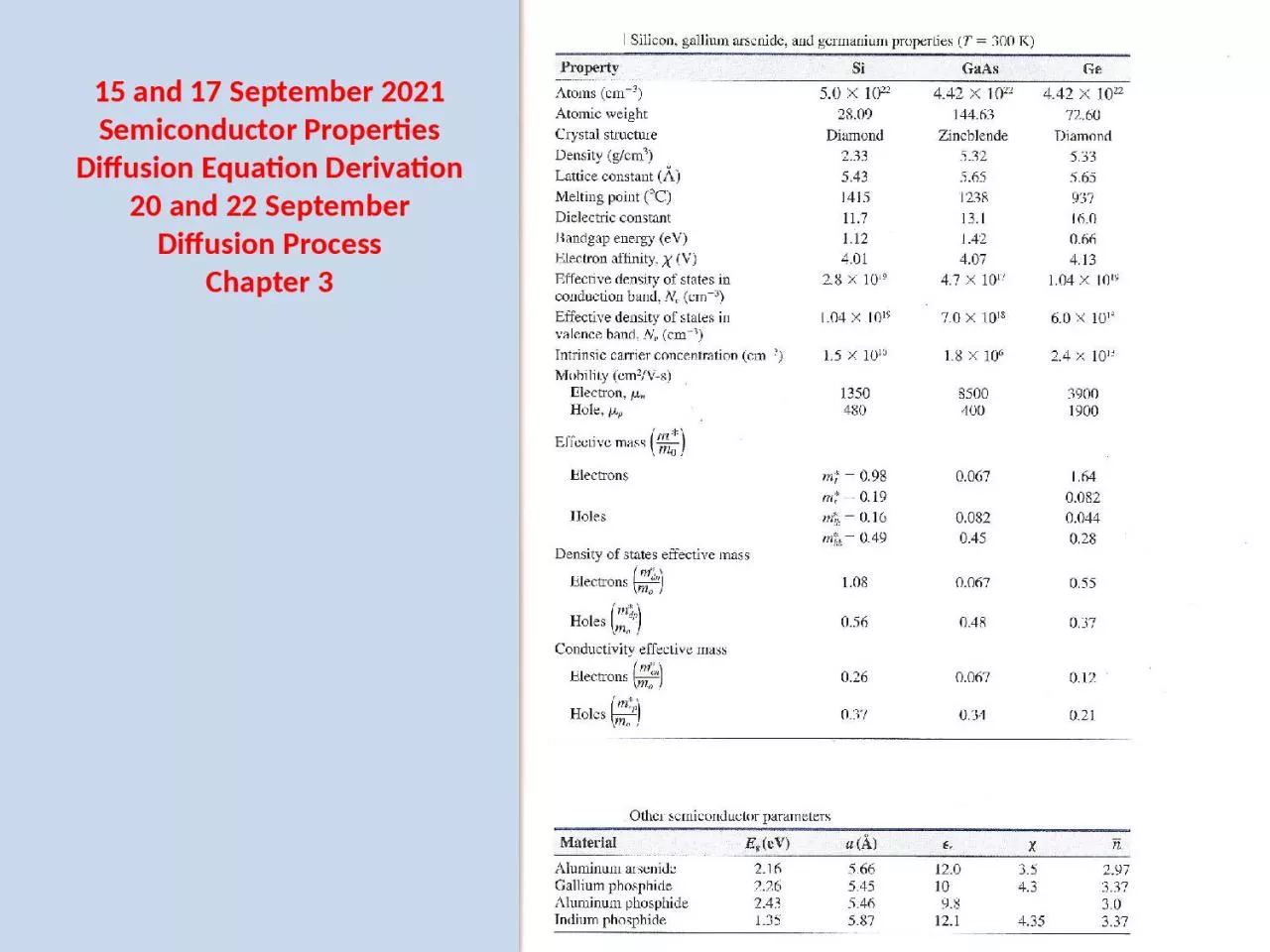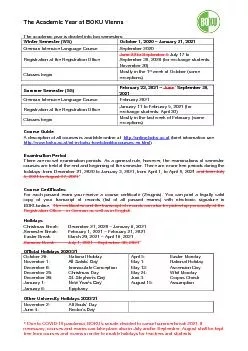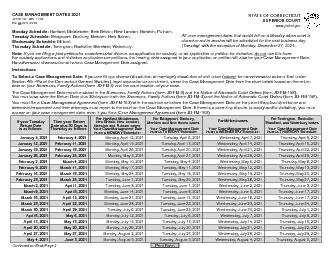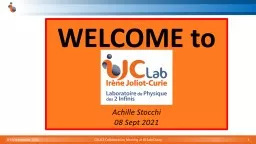PPT-15 and 17 September 2021
Author : payton | Published Date : 2023-06-23
Semiconductor Properties Diffusion Equation Derivation 20 and 22 September Diffusion Process Chapter 3 Doping Using Diffusion Junction Depth 17 In this example Si
Presentation Embed Code
Download Presentation
Download Presentation The PPT/PDF document "15 and 17 September 2021" is the property of its rightful owner. Permission is granted to download and print the materials on this website for personal, non-commercial use only, and to display it on your personal computer provided you do not modify the materials and that you retain all copyright notices contained in the materials. By downloading content from our website, you accept the terms of this agreement.
15 and 17 September 2021: Transcript
Download Rules Of Document
"15 and 17 September 2021"The content belongs to its owner. You may download and print it for personal use, without modification, and keep all copyright notices. By downloading, you agree to these terms.
Related Documents












![[DOWNLOAD] 2021 Weekly and Monthly Planner: Weekly and Monthly Calendar Planner January](https://thumbs.docslides.com/1005265/download-2021-weekly-and-monthly-planner-weekly-and-monthly-calendar-planner-january-2021-december-2021.jpg)

